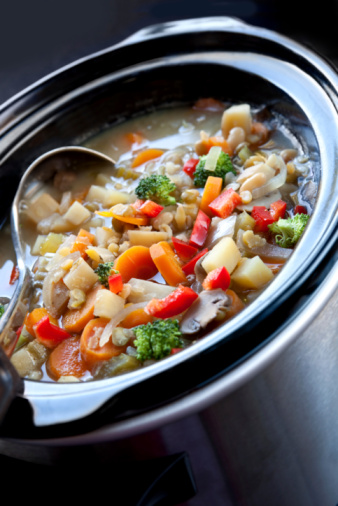
With the recent listeria outbreak from tainted cantaloupes which has left 13 people dead in another deadly United States foodborne illness epidemic, it is more and more important for consumers to take extra precautionary steps in preventing such foodborne illnesses from occurring. There are several easy steps that you can take, many of which begin at the supermarket, grocery store, or any other place where food is purchased, to better ensure safety. According to the Center for Disease and Control Prevention, 76 million Americans report to have suffered from foodborne illnesses each year. That estimates to roughly 325,000 hospitalizations and 5,200 deaths nationwide each year.
Because each state law will vary regarding employee food handling practices, be aware of how the food is being packaged, handled, stored and served in the store where your produce, meats, and grocery items are being bought. Buy from a retailer who follows proper food handling practices. This helps assure that the food is safe. Reframe from sampling food that has been sitting in open trays and handled by other customers, especially if it is not properly covered or chilled.
Ensure that raw meats, poultry, and seafood are kept separate from other foods in your grocery shopping cart with plastic bags to prevent juices from dripping on other foods. Better yet, keep these items separate from other foods at the checkout and in their own grocery bags.
Though buying food in cans that are bulging or dented may save you a few cents, a bulging can or jar lid may mean the food was under-processed and contaminated. Double check that seals and safety labels are air tight when you buy a food product to ensure that it has not been tampered with or damaged.
None of your frozen grocery item packages should be open, torn or crushed on the edges. Avoid packages that are above the frost line in the store's freezer. If the package cover is transparent, look for signs of frost or ice crystals. This could mean that the food in the package has either been stored for a long time or thawed and refrozen. Check expiration dates!
Always inspect that the eggs in their carton are not cracked and no other eggs have leaked into your dozen. Refrigerated eggs foodborne diseases best.
It's important to refrigerate perishable products as soon as possible after grocery shopping. Food safety experts stress the "2-hour rule"—because harmful bacteria can multiply in the "danger zone" (between 40° and 140° F), perishable foods should not be left at room temperature longer than 2 hours. Modify that rule to 1 hour when temperatures are above 90° F, as they often are in cars that have been parked in the sun. Keep an ice chest in your car if it will take you longer than an hour to bring your groceries home, or keep your groceries in the passenger compartment with the air conditioner on, not the trunk.
Make sure that you wash your hands and any surface of item that the food(s) may come into contact with when preparing or handling food, including kitchen utensils, cutting boards, countertops, cookware and tableware. Wash hands with warm water for 20 seconds with antibacterial soap and spray countertops with cleaner or soap and water after use, after preparing raw meats and produce, and after eating. Also, wash your produce (even pre-triple washed spinach, lettuce, and other fruits and vegetables from a bag) before consumption.
Just like you separate your raw meats, poultry, and seafood from your produce at the grocery store, make sure you are keeping your raw meats, poultry, and seafood separate when preparing them at home. Use different sides of the cutting board when preparing these foods with produce, and thoroughly wash the cutting and cooking utensils between each different item use. Keep bowls and dishes separate for foods that are cooked and uncooked.
Use a clean internal thermometer to check the temperature of the foods you are preparing, The danger zone where harmful microorganisms and bacteria thrive is between 40 F and 140 F. Cooking meats until they are brown is not the best way to ensure the harmful microorganisms are dead, but an internal thermometer is. If you are plant to keep your food warm after cooking, make sure the internal thermometer does not drop below 140F.
Check that your refrigerator setting is lower than 40 F and the freezer is set below 0 F. Store left over foods and perishable foods quickly (no less than 2 hours). Food that has reached room temperature begins bacterial growth, so get them to a chilled box, quick. Doggie bags from restaurants last about 3 days in the refrigerator. When thawing frozen items, place foods in the refrigerator, not on the countertop. For immediate thawing, run the food under the sink with cold water or in the microwave. Cook the food immediately.
Resources: FSIS.USDA.gov, CDC.gov, FDA.gov, foodborneillness.com
